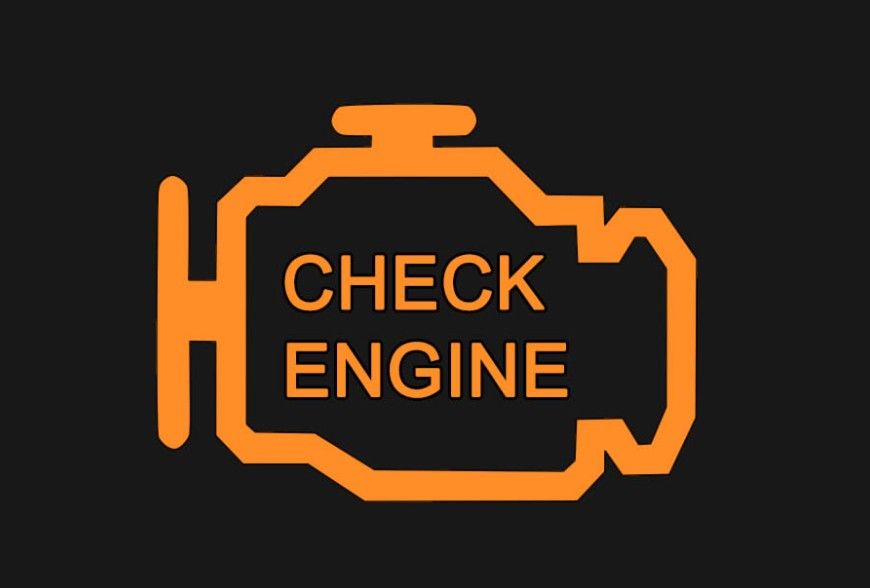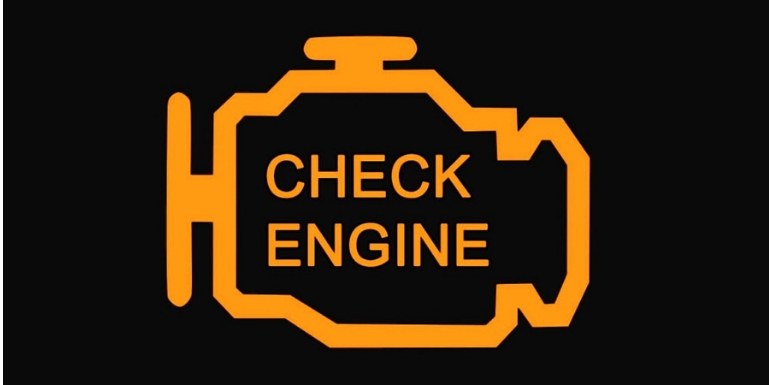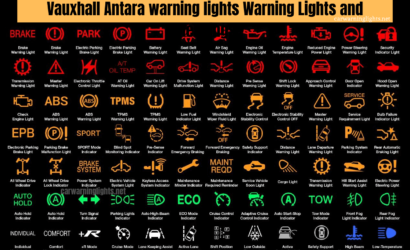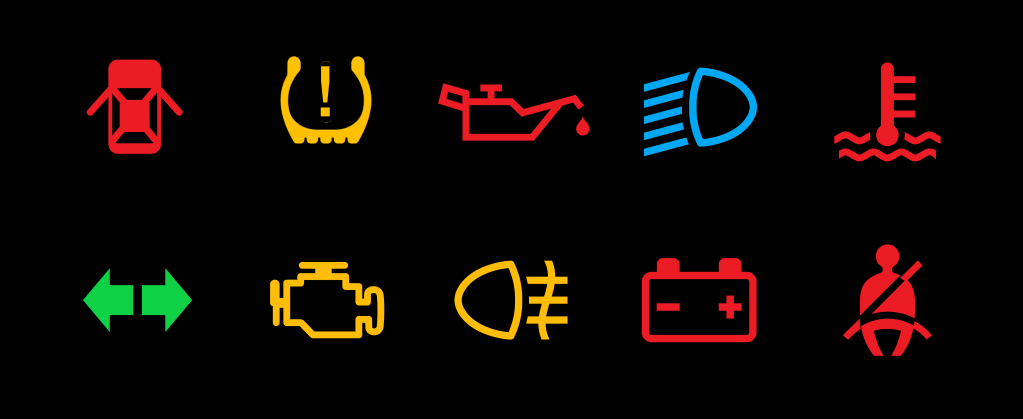Check Engine Light Flashing | Check Engine Light Meaning?: The check engine light is a kind of safety valve for today’s vehicles. Today, almost all motor vehicles have a brain system in which there is software that controls the functions of the motor. Generally, we can call it a “small computer” for this system which is located on the whole of injected internal combustion engines.
This computer stands out as a very important part of the engine, which is both responsible for the motor’s functioning and warn us when things go wrong.
What Is Check Engine Light?
The brain system, which is located in the motor, controls different points with sensors. These sensors constantly monitor different points of the system, as programmed by the computer software. The computer sends a warning to the brain when it feels the slightest irregularity and deviation.
The car’s brains also open various fault lamps on the indicator panel to warn the driver. While many indicator lamps usually report a single fault, the engine malfunction lamp can be a signifier of many more and different types of faults. In some cases, this lamp may be activated for a very simple reason, and in some cases it may indicate that there is a serious problem in the engine system. For this reason, when the indicator shows up warnings lights, it should be taken seriously by drivers.
In some models the malfunction light may just appear in the form of an engine emblem. However, in some models it may turn on as an engine emblem like a “Check” light.
Why Does the Check Engine Light Come On?
If the check engine light up, it may mean that one or more of the following systems are basically in trouble;
- Due to related faults with the LPG system (Catalytic Converter, LPG Gas Adjustment)
- Due to fuel system related faults,
- Due to ignition system related faults,
- Due to related with the air intake system,
- Due to the exhaust system related faults.
Let’s examine and elaborate on the materials which are mentioned above in more detail. This warnings, which is sometimes very simple and cost-effective, can sometimes be a very serious and expensive problem.
1.LPG System
If you have an LPG system in your vehicle, it is often the case that the engine malfunction lamp shows up. The fuel combustion systems are lpg-induced changes in the current values of the sensors that control them. In catalytic converters in LPG vehicles, the oxygen sensor causes the engine fault light to turn on.
To examine in detail;
Due to the rich-poor mixture, the engine malfunction lamp may turn on. If the fuel in the combustion chamber of the vehicle fuel is too much, if the air is low, the rich mixture comes up. However, if the air is too much also air is low, the poor mixture comes up. This will cause both your vehicle fuel consumption increase and the engine malfunction lamp to turn on.
Your car needs to be calibrated properly. During installation, if the injectors are not installed in the correct position, leaving the injector hose distances too long before being adjusted can also light up the engine failure lamp. The ideal engine temperature for passing the vehicle to LPG is 40 degrees. In the setting for early switching to LPG, the gas may be sent to the injectors without vaporizing, which may lead to a kickout and turning on of the engine malfunction lamp.
2.Oxygen (Lambda) Sensor
Oxygen sensor is one of the most common causes of the engine malfunction lamp (check engine light). This device, which measures the amount of oxygen in the air that the engine needs to burn and whether the air-fuel mixture is being built correctly, will result in a malfunctioning engine failure light and fuel consumption can increase significantly. For this reason it must be changed.
3.Catalytic Converter
An important part of the exhaust system, the catalytic converter helps to reduce the effects of toxic gases from the cylinders. In this case less toxic gas is released into the atmosphere. In addition to this, if the engine is damaged due to the design of all the settings for this part, there can be a negative effect on the engine performance. For this reason, the malfunction of the catalytic converter can show the engine failure lamp.
4.Plug, Spark-Plug Cables And Battery
The smallest problem in the ignition system prevents the engine from operating properly. As a result of this, the engine’s performance drops and fuel consumption increases. The problem that may arise in one or more of the spark-plugs prevents the air-fuel mixture from being properly ignited. The loosening of the plugs can cause the same problems. On the other hand, no matter how good the spark-plugs are, if the spark plug wires cannot transfer the current well to the spark plugs, the ignition in the cylinders does not occur and the air fuel mixture cannot fire properly.
As a result, the old spark plug wires can cause the engine warning lamp to turn on. In addition, the battery is also closely related to the ignition system, very weak batteries can sometimes cause this light to turn it on.
5.Air Flow Sensor (Flowmeter, MAF Sensor)
The MAF, Mass Air Flow sensor measures the pressure and humidity of the air required for combustion in the cylinders and works with the oxygen sensor. If this sensor malfunctions, fuel consumption increases, idling becomes irregular and the engine can run hard. It is a very important sensor for the engine to work properly and it turns light on the engine failure lamp (check engine light) in case of malfunction.
6.EGR Valve – (Exhaust Gas Recirculation)
The purpose of this valve is to return 6% – 10% of the exhaust gases from the cylinders to the cylinders by mixing with fresh air through the intake to manifold. The engine’s brain decides how much of the exhaust gases are to be used. If there is a problem with this system, such as a blockage or a completely open, or when the software changes the amount of air that is required when it is canceled, the engine malfunction light may turn on.
7.Thermostat
Each engine has an ideal working temperature and this temperature can be kept at a certain level thanks to the engine cooling system. The thermostat decides when the cooling system is to be commissioned. This device is set to a certain temperature and the engine temperature is switched on when this threshold is reached. If the thermostat is a malfunction that may occur in the event, the cooling system will not be commissioned or will be late. As a result, the engine operating temperature rises and may become hot. This can turn on the engine malfunction lamp.
8.Fuel Injectors
Both types of injectors are responsible for injecting the fuel into the cylinders, whether it can be diesel or petrol engines. The blockage or other problem that may be experienced in this part is that the fuel does not spray in the combustion chamber in sufficient quantity. As a result, the combustion does not take place ideally and the engine failure light may turn on.
9.Non-Standard Fuel
Some fuel stations can sell unsupervised fuels that are not standard, poor quality or polluted. This situation which is illegal, can cause problems in today’s highly sensitive engines. As a result of this, the sensors in the fuel system can not detect non-standard fuel and turn on the engine malfunction lamp.
10.Fuel Tank Cap
It may be quite simple and ridiculous, but it is often encountered in that situation and it cannot not be underestimated. These problems can occur more often because we need to regularly refuel. If the fuel filler dispenser does not squeeze or fill the tank cap as required, the sensor in the fuel tank can not measure the amount of evaporation of the fuel and the motor malfunction lamp can turn on.
How to Reset a Check Engine Light?
The engine fault – malfunction lamp will turn itself off in some cases, in some cases it will be turned off by connecting to the OBD. If the faulty data detected by the engine computer is not received within a certain period of time, the engine fault lamp will turn itself off. However, if the problem persists, the authorized service is connected to the OBD device and the fault is detected, and if not, the fault light is turned off. However, if the problem persists, a fault is detected in the authorized service center by connecting to the OBD device, and if it is not, the fault light is turned off by themselves.
Check Engine Light Flashing
If the yellow malfunction fault lamp is blinking, there is a serious problem with the engine running, the engine control unit (ECU) switches the engine to the fault mode when the light is on and off. Fault mode is an emergency strategy used by the ECU to prevent damage to the engine. It tries to correct the engine running, in doing so it can change the ignition advance and injection, limit the engine speed, limit the engine power, ignore the gas demand. Sometimes stopping and running again can get out of this mode. You should go to the service as soon as possible.
For Turkish, you can access it from the link below.
https://arizaisiklari.com/motor-ariza-lambasi-sari-yaniyor/
IMPORTANT: The engine malfunction lamp is the life safety of your vehicle. Continuous lightining the lamp causes you to be unable to understand the very serious problems that will arise in the future. Never use your device this way!





Can’t seem to the find the symbol for DS coming up sometimes. Can someone tell me what this means?